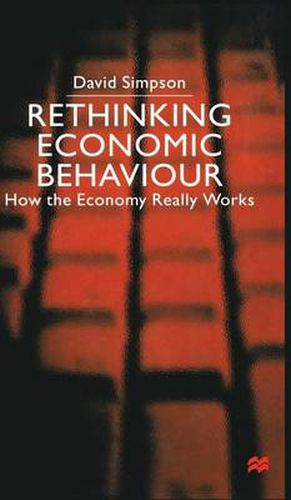Readings Newsletter
Become a Readings Member to make your shopping experience even easier.
Sign in or sign up for free!
You’re not far away from qualifying for FREE standard shipping within Australia
You’ve qualified for FREE standard shipping within Australia
The cart is loading…






This title is printed to order. This book may have been self-published. If so, we cannot guarantee the quality of the content. In the main most books will have gone through the editing process however some may not. We therefore suggest that you be aware of this before ordering this book. If in doubt check either the author or publisher’s details as we are unable to accept any returns unless they are faulty. Please contact us if you have any questions.
Treating the market economy as a complex adaptive system offers a better explanation of how it works than does the mechanical analogy of neoclassical equilibrium theory. The nonlinear interactions of millions of individual human beings, coupled with the influence of chance, results in the emergence of markets. Other regularities emerge in the patterns of economic growth, business cycles and in the spatial locations of economic activity. This work demonstrates the implication of complexity theory for business and government decision making, and concludes with an assessment of the future evolution of the market economy.
$9.00 standard shipping within Australia
FREE standard shipping within Australia for orders over $100.00
Express & International shipping calculated at checkout
This title is printed to order. This book may have been self-published. If so, we cannot guarantee the quality of the content. In the main most books will have gone through the editing process however some may not. We therefore suggest that you be aware of this before ordering this book. If in doubt check either the author or publisher’s details as we are unable to accept any returns unless they are faulty. Please contact us if you have any questions.
Treating the market economy as a complex adaptive system offers a better explanation of how it works than does the mechanical analogy of neoclassical equilibrium theory. The nonlinear interactions of millions of individual human beings, coupled with the influence of chance, results in the emergence of markets. Other regularities emerge in the patterns of economic growth, business cycles and in the spatial locations of economic activity. This work demonstrates the implication of complexity theory for business and government decision making, and concludes with an assessment of the future evolution of the market economy.